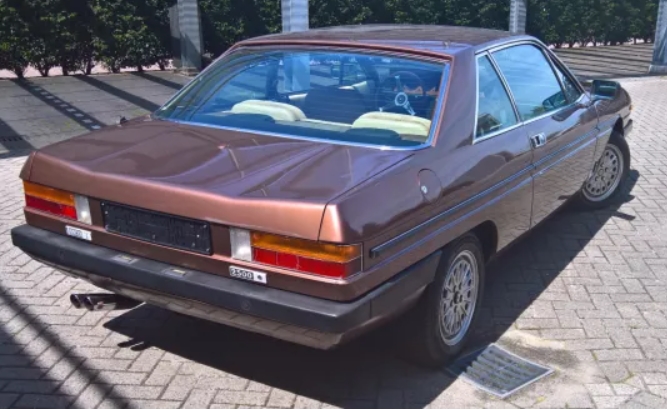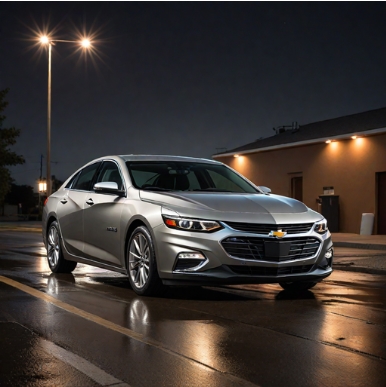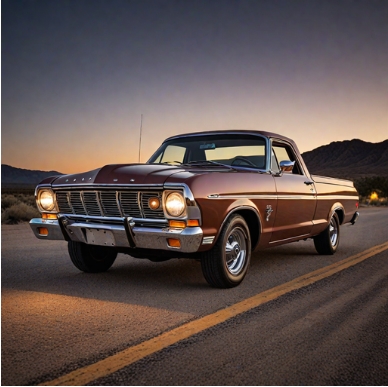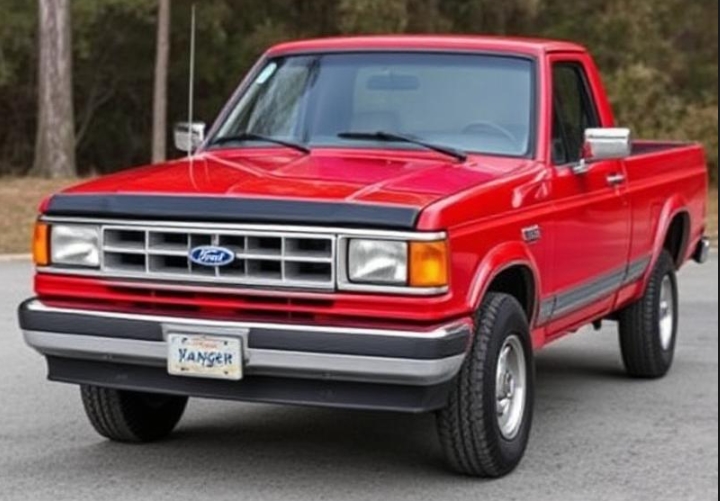The Last Great Lancia: The Ambitious and Flawed Evolution of the Gamma
In the pantheon of automotive history, few brands evoke such a potent mix of passion, innovation, and heartbreak as Lancia. For decades, the Italian marque was a byword for engineering excellence, pioneering technologies like the V4 and V6 engines, monocoque chassis construction, and five-speed gearboxes. However, by the late 1960s, the company was in financial turmoil, leading to its acquisition by Fiat in 1969. The 1970s, therefore, became a crucible for the brand’s identity: could Lancia retain its fiercely independent engineering spirit under the pragmatic oversight of a mass-market giant? The answer, in its most complex and beautiful form, was the Lancia Gamma.
Launched in 1976, the Gamma was conceived as the brand’s new flagship, a successor to the stately Lancia 2000. It was designed to compete with the finest executive saloons from Germany and France, cars like the Mercedes-Benz W123, the BMW 5 Series, and the Citroën CX. To do this, Lancia knew it couldn’t just build a conventional car. It had to be a Lancia—audacious, technically advanced, and styled with Italian flair. The Gamma was all of these things, but its evolution is a story of magnificent theory undone by problematic practice, a tale of ambition that flew perilously close to the sun.
Genesis and the First Series (1976-1979)
The project, designated Tipo 830, was Lancia’s clean-slate attempt at a modern luxury car. The company’s engineers clung to two core Lancia traditions: front-wheel drive, which they had perfected in the Flavia and Fulvia, and the boxer engine. While competitors were using inline-sixes and V6s, Lancia developed a brand-new, all-aluminium flat-four engine. This choice was deliberate; a boxer engine offered exceptional smoothness and, crucially, a very low profile. This allowed the designers at Pininfarina to pen a body with a dramatically low bonnet line, contributing to a sleek, aerodynamic silhouette.
The Gamma debuted at the 1976 Geneva Motor Show in its primary form: the Gamma Berlina.
Model: Gamma Berlina (Series 1)
Years Produced: 1976-1979
Design: Penned by Aldo Brovarone at Pininfarina, the Berlina was not a traditional three-box saloon. It was a distinctive fastback, or “berlinetta,” with a long, sloping rear that terminated in a conventional boot lid rather than a hatchback. The styling was polarizing. From some angles, its clean, unadorned surfaces and expansive glasshouse were the epitome of modernist elegance. From others, its proportions could appear slightly awkward, lacking the visual tension of its German rivals. It was a car that demanded a sophisticated eye, a hallmark of Lancia’s intellectual approach to design.
Engines & Trim: The First Series Gamma was offered with two engine variants, primarily to circumvent Italy’s punitive tax laws on engines over 2.0 litres.
Gamma 2000: This version used a 1999 cc carbureted flat-four, producing a modest 115 bhp. It was primarily for the domestic Italian market and offered adequate, if not sparkling, performance.
Gamma 2500: The export and flagship model featured the full-fat 2484 cc carbureted flat-four, delivering a healthier 140 bhp. This engine gave the Gamma the long-legged, effortless cruising ability expected of an executive car.
Trim Levels: Lancia did not use distinct trim level names like “LX” or “GTE” during this period. The car came in a single, high specification. Standard equipment was generous for the era, including power steering, central locking, electric front windows, and a sophisticated dashboard. Optional extras included a 4-speed automatic transmission (a rare and often troublesome choice), air conditioning, and luxurious velour or optional leather upholstery.
A year after the saloon’s debut, at the 1977 Geneva Motor Show, Pininfarina unveiled the car that would cement the Gamma’s place in history as a design icon: the Gamma Coupé.
Model: Gamma Coupé (Series 1)
Years Produced: 1977-1979
Design: If the Berlina’s styling was a subject of debate, the Coupé’s was a matter of universal acclaim. Built on a shortened Berlina floorpan, the Coupé was a masterpiece of proportion and restraint. Also styled by Aldo Brovarone, it was a pure, three-box GT with a formal roofline, razor-sharp creases, and a sense of timeless elegance that has not diminished with age. It shared no body panels with the Berlina and was assembled in-house by Pininfarina, lending it an almost coachbuilt air of quality and exclusivity. Today, it is widely regarded as one of the most beautiful cars of its era.
Engines & Trim: The Coupé was offered with the same 2.0-litre and 2.5-litre boxer engines and specification level as its four-door sibling.
Despite its advanced specification and beautiful styling, the First Series Gamma was plagued by a reputation for unreliability. The all-new flat-four engine, a marvel on paper, proved fragile in reality. The most infamous design flaw concerned the power steering pump, which was uniquely driven by the timing belt for the left-hand cylinder bank. If the driver held the steering on full lock when the engine was cold and the hydraulic fluid was thick, the strain could cause the timing belt to strip its teeth or jump, leading to immediate and catastrophic engine damage as pistons and valves collided. Furthermore, the engine was prone to overheating and head gasket failures due to its “wet liner” cylinder design. Coupled with the persistent rust issues that afflicted many Italian cars of the period, the Gamma’s reputation suffered badly.
Refinement and the Second Series (1980-1984)
Lancia was acutely aware of the Gamma’s teething problems and worked to address them in a significant mid-life update, launched in 1980. This is commonly referred to as the Second Series or “FL” (Facelift).
The changes were both cosmetic and, more importantly, mechanical.
Model: Gamma Berlina FL & Gamma Coupé FL (Series 2)
Years Produced: 1980-1984
Cosmetic Changes: The most obvious external change was the adoption of a new corporate grille—a bolder, black surround with a prominent chrome Lancia shield, bringing the Gamma in line with the new Delta. New 15-inch alloy wheels, often called “pepper pot” style, replaced the earlier 14-inch designs. The interior received a more substantial overhaul with a redesigned dashboard, a new four-spoke steering wheel, and improved trim materials, giving the cabin a more modern and luxurious feel.
Mechanical Evolution: The most significant upgrade came under the bonnet.
Gamma 2000: The 2.0-litre engine remained largely unchanged, retaining its carburettor and producing 120 bhp.
Gamma 2500 i.e.: The 2.5-litre engine received a crucial update: Bosch L-Jetronic fuel injection. This not only improved fuel efficiency and throttle response but also boosted reliability and refinement. Power remained at 140 bhp, but the torque delivery was smoother across the rev range, making the car a more relaxed and capable grand tourer. Lancia also implemented subtle engineering changes to the engine ancillaries and cooling system to mitigate the notorious reliability issues of the First Series.
A rare and desirable variant of the Second Series Coupé was the Gamma Coupé IE Turbo, a model developed with Dutch Lancia importer Engelbert. It featured a Garrett turbocharger fitted to the 2.5-litre injected engine, boosting power to around 170-190 bhp. While not an official factory model, a small number were produced, turning the elegant coupé into a true high-performance machine.
The Intriguing ‘What Ifs’: Concepts and One-Offs
The Gamma’s advanced platform also inspired several fascinating concepts that showcased its versatility, though none made it to production.
Gamma Olgiata (1982): A stunning three-door shooting brake/hatchback concept designed by Pininfarina, named after a Roman golf club. It transformed the Coupé’s elegant lines into a practical and incredibly stylish sports estate. It remains a one-off, a tantalizing glimpse of what could have been.
Gamma Scala (1980): Another Pininfarina creation, the Scala was a four-door convertible based on the Berlina. It featured a fixed central T-bar for structural rigidity, creating a unique “landaulet” style. Presented to Fiat’s top brass, it was ultimately deemed too niche for production.
Gamma Eagle (1978): A radical departure, this was a sharp, wedge-shaped concept car penned by Giorgetto Giugiaro’s Italdesign. Based on Gamma mechanicals, it was a futuristic gullwing-doored sports car that bore little resemblance to the production model but demonstrated the underlying potential of its engineering.
.

.
Legacy and Conclusion
Production of the Lancia Gamma ceased in 1984. In total, approximately 15,272 Berlinas and just 6,790 Coupés were built, making it a relatively rare car, especially the latter. Its troubled reputation for reliability had hampered sales throughout its life, and it could never truly challenge the dominance of its German competitors in the sales charts.
The Gamma was succeeded by the Lancia Thema, a product of the “Type Four” platform-sharing project with Fiat, Saab, and Alfa Romeo. The Thema was a far more conventional, commercially successful, and reliable car, but it lacked the Gamma’s audacious engineering and unique character.
In many ways, the Lancia Gamma represents the end of an era. It was the last flagship model designed and engineered with the old, fiercely independent Lancia spirit. It was a car of profound contradictions: its engine was both a brilliant concept and a catastrophic liability; its Berlina body was elegantly modern yet commercially challenging; its Coupé derivative was an undisputed work of art. The evolution of the Gamma is not a story of market success, but of a noble, flawed attempt to build a truly unique luxury car in a world that was increasingly valuing pragmatic conservatism. Today, for the dedicated enthusiast willing to understand its quirks, the Lancia Gamma—especially in its breathtaking Coupé form—stands as a monument to the last great gamble of a legendary Italian marque.







